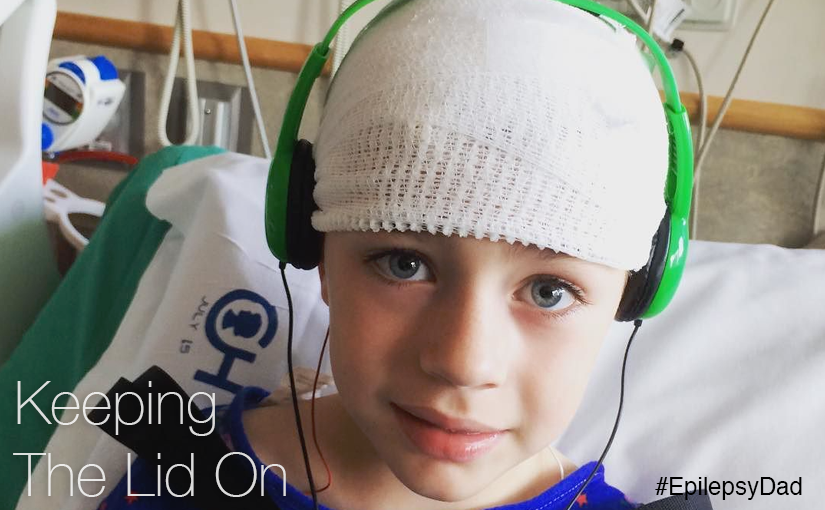We had a few good weeks. After a year on the ketogenic diet and what seemed like the constant juggling of medicine, we were only seeing an occasional seizure in the early morning. The behavioral issues leveled out, even if the problems with attention and ataxia did not. But we felt stable enough that the conversation with our neurologist turned to talks of lowering one of my son’s medicines.
There was one medicine, in particular, that we started last year while we were living on the neurology floor of the hospital. It was one of the rounds on the bombardment of medicines that my son was given to battle the endless onslaught of seizures attacking his brain. After the smoke cleared, we left the hospital with a long list of prescriptions that included a few pills of questionable effect. Now that we were relatively stable, we decided to lower the dose of the first medicine to see if it was working and hopefully lessen any its side effects that were burdening my son.
The first reduction (with every medicine, there is a gradual weaning, not an abrupt stoppage) was uneventful. We did not see an increase in seizures, but we also did not see a reduction of side effects. After the second reduction, though, we started to see a change. Instead of confining themselves to the early morning hours, we started to see seizure activity during the day, as well. The myoclonic jerks that, in hindsight, acted as our canary in the epileptic mine slowly came back. At first, there were only a few…so few that we probably missed them initially. But then there were more, and they were hard to ignore. Then the tonic-clonic seizures also crept in to the daytime. Then the most telltale signs of a problem returned…the exhaustion, the uncontrollable sadness, slurring and having a hard time finding words, and the anger.
Our neurologist scheduled an EEG that confirmed that the subclinical seizures were also back and his EEG background was a mess. The report showed that the medicine that we suspected wasn’t helping had been working, so we again adjusted course and started raising the dosage.
Unfortunately, it was too late. By the time we realized that the medicine was working, the seizures were already cascading through my son’s brain, and it would take days before the increased dose would have an effect. We had taken the lid off the pot and it was boiling over.
As the seizures continued and the effects of each seizure lingered longer, we used our rescue medicine to buy us some time until the increase in dosage kicked in. We made it through the night, but the next morning the seizures and my son’s exhaustion and processing difficulties continued. “My brain is still going backwards,” my son said, which was his way of communicating that something was still wrong. We contacted our neurologist and by that night, we found ourselves admitted to the neurology floor.
The technicians hooked him up to an overnight EEG and within an hour our neurologist came in to tell us that his readout was still a mess. The plan was to monitor him to determine if we needed to introduce a temporary medicine to hold us over until we were back up to our working dose of his regular medicines, but the bridge medicine was one that, while it worked for seizures, brought with it rage.
We spent the night watching the EEG screen, pushing an alarm for each seizure we saw and calling out in to the night which type of his many seizures we were reporting. That night was a combination of a lack of sleep, concern for our son, and dreading the threat of the temporary medicine. By early morning, my son had gone a few hours without a seizure and I fell asleep next to him on his bed.
We woke up the next morning and my son started to feel better. The doctors came in and said, while his EEG still wasn’t great, it was trending in the right direction and that we could go home. While it seemed terrifying to leave while things were still “not great”, we learned last year that a positive trend is enough to go home with.
As we left the hospital, I knew, like I do every time, that this wouldn’t be our last time there. While this episode seemed like it was caused by a dosage change, there is always the concern that an illness will cause more seizures, or that a medicine stopped working, or that it’s a progression of my son’s condition.
We seem to be just trying to keep the lid on his seizures and the side effects of the medicine we use to try to control them, when all we really want is for someone to turn down the heat.
